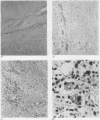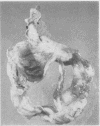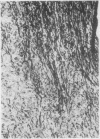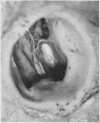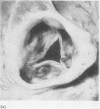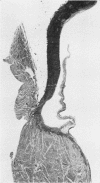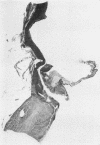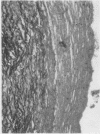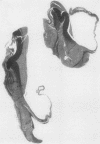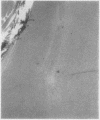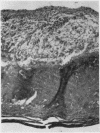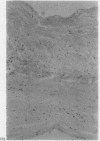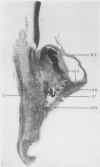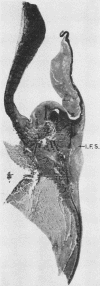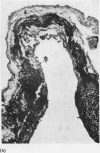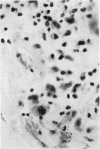Abstract
Beta-propiolactone sterilized, freeze-dried aortic valve homografts offer a dead framework which is accepted by the host and is capable of immediate and full function. The survival time of such grafts as fully functional units may be limited by physical and chemical alterations produced in the tissues by sterilization and freeze-drying. The organizing reaction of the host in covering the grafts or using them as a scaffolding may also be affected by these processes. It is possible that better long-term results may be achieved by using fresh grafts. There is no difference in host cellular response to fresh and sterilized and/or freeze-dried grafts. There is a possibility that heterogeneous reactions to polypeptides in the graft may occur in some individuals. Organization and covering of the graft by host tissue occurs from host tissues contiguous to the graft. Cells circulating in the bloodstream play no part in this by seeding on the surface. Thrombosis, in the absence of infection, is a rare complication. (Anticoagulants were not used in these patients.) Calcification occurs as only a late complication in persisting `dead' tissue. Unsuspected, and often extensive, myocardial ischaemia occurs frequently under bypass conditions with coronary artery perfusion and substantially contributes to immediate post-operative mortality and morbidity.
Full text
PDF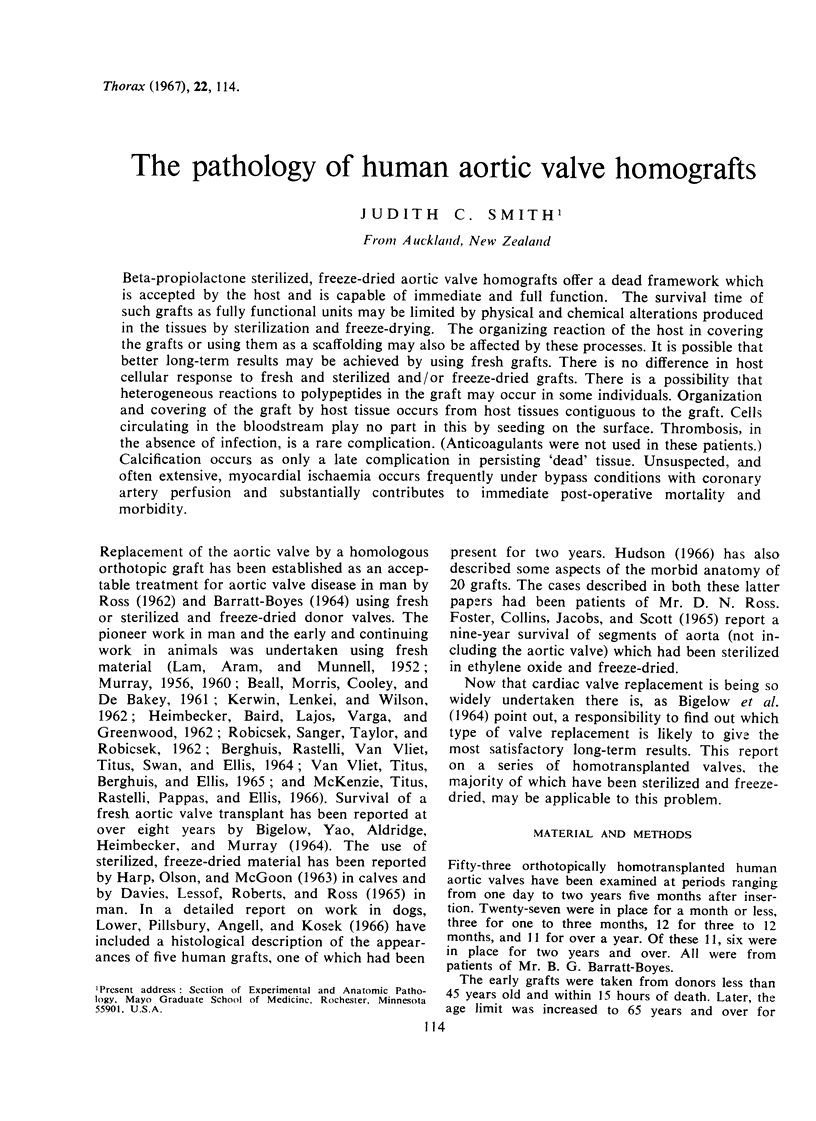
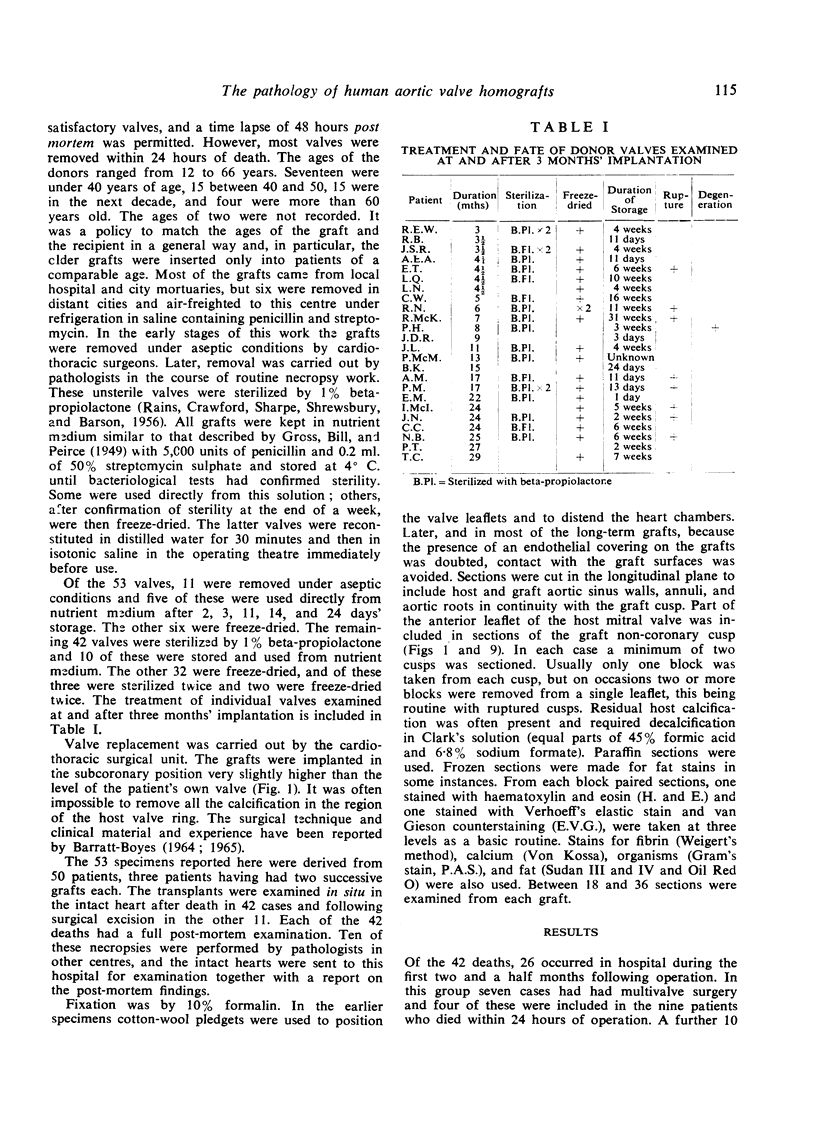
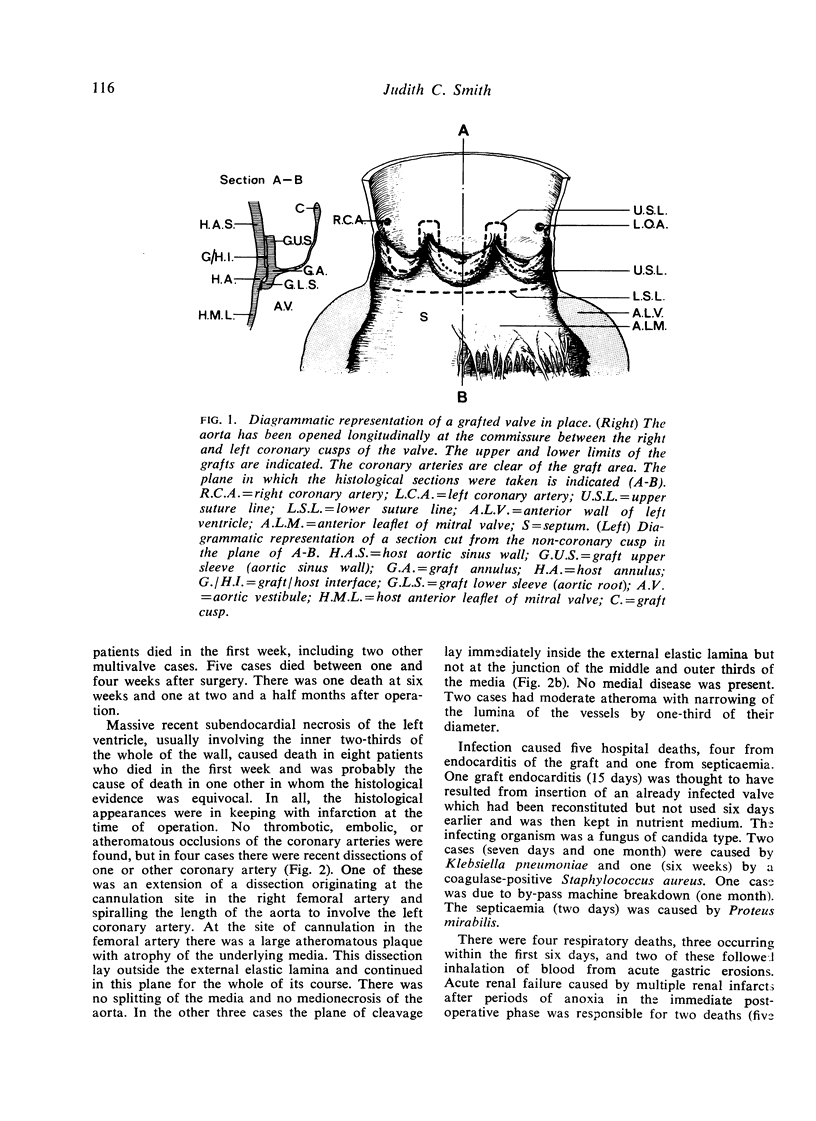
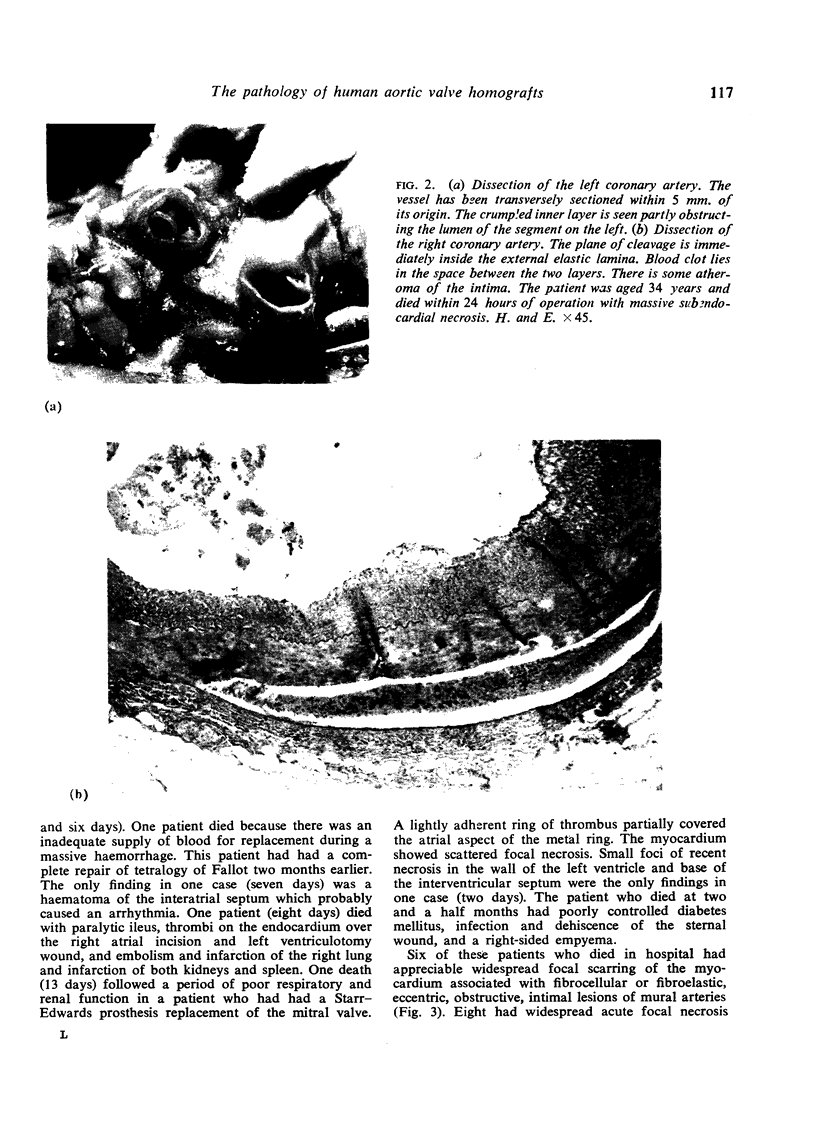
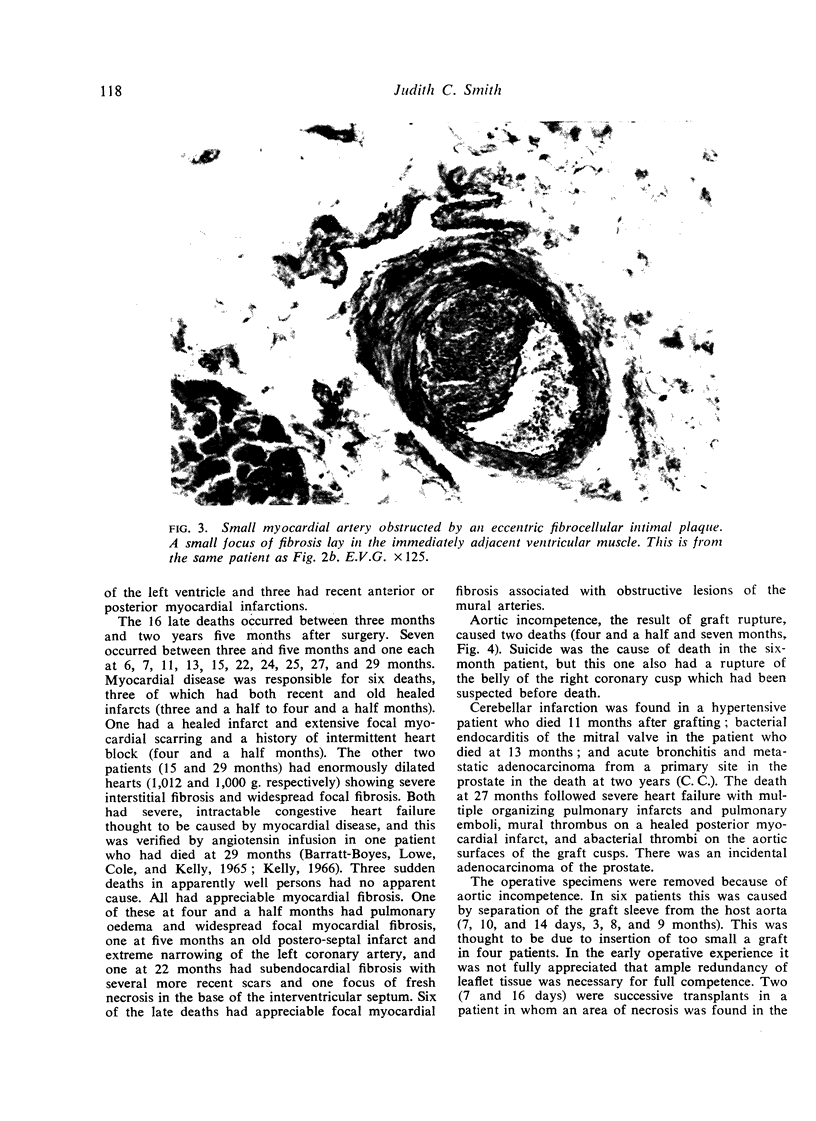
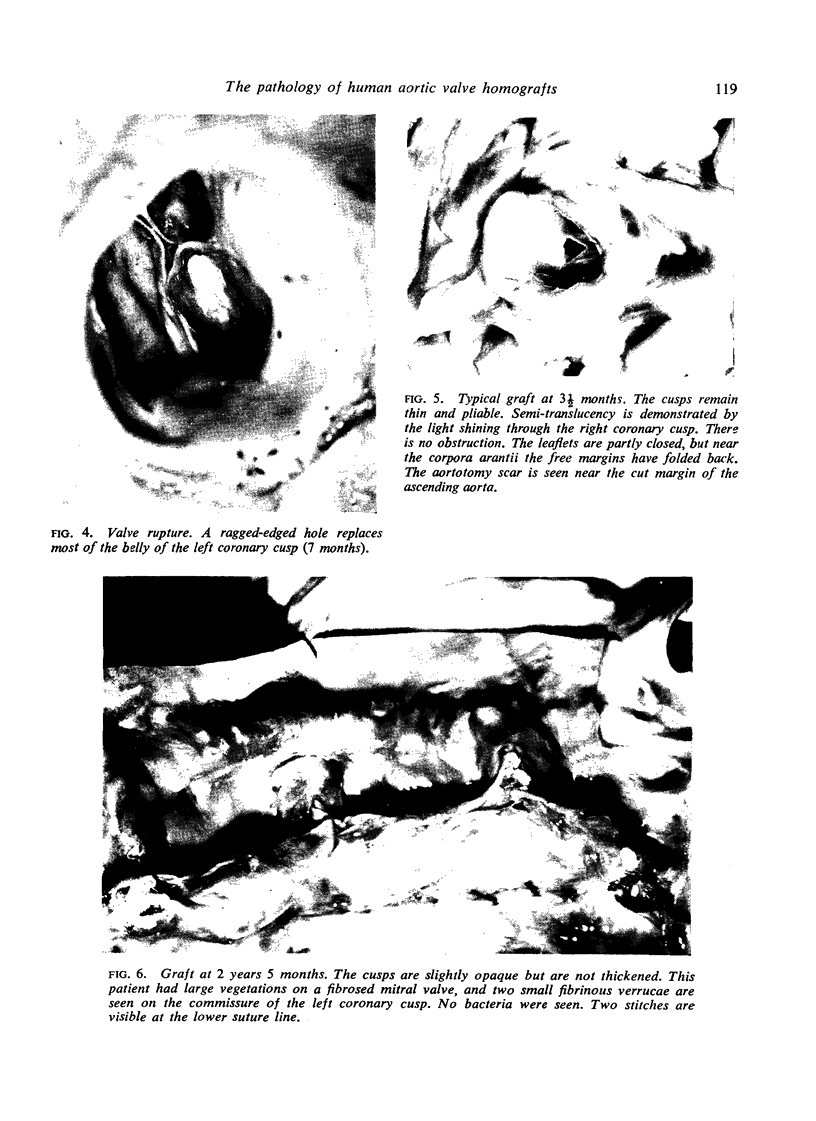
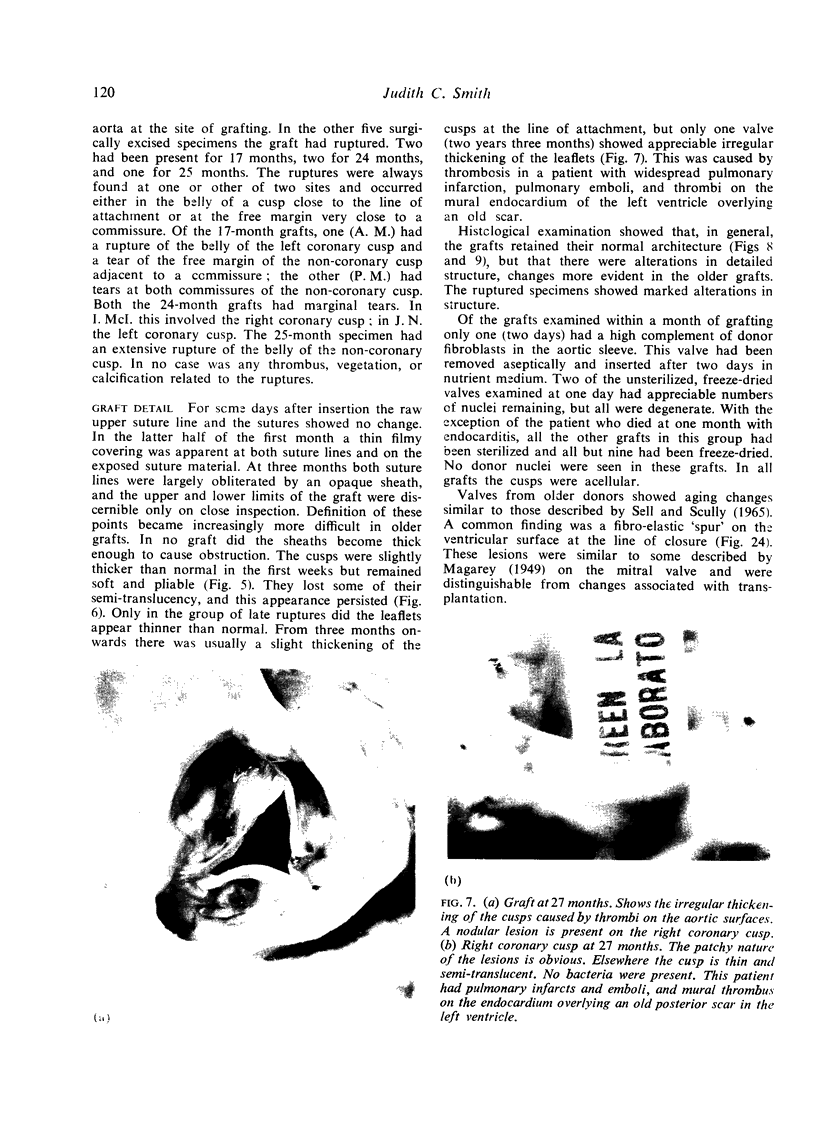
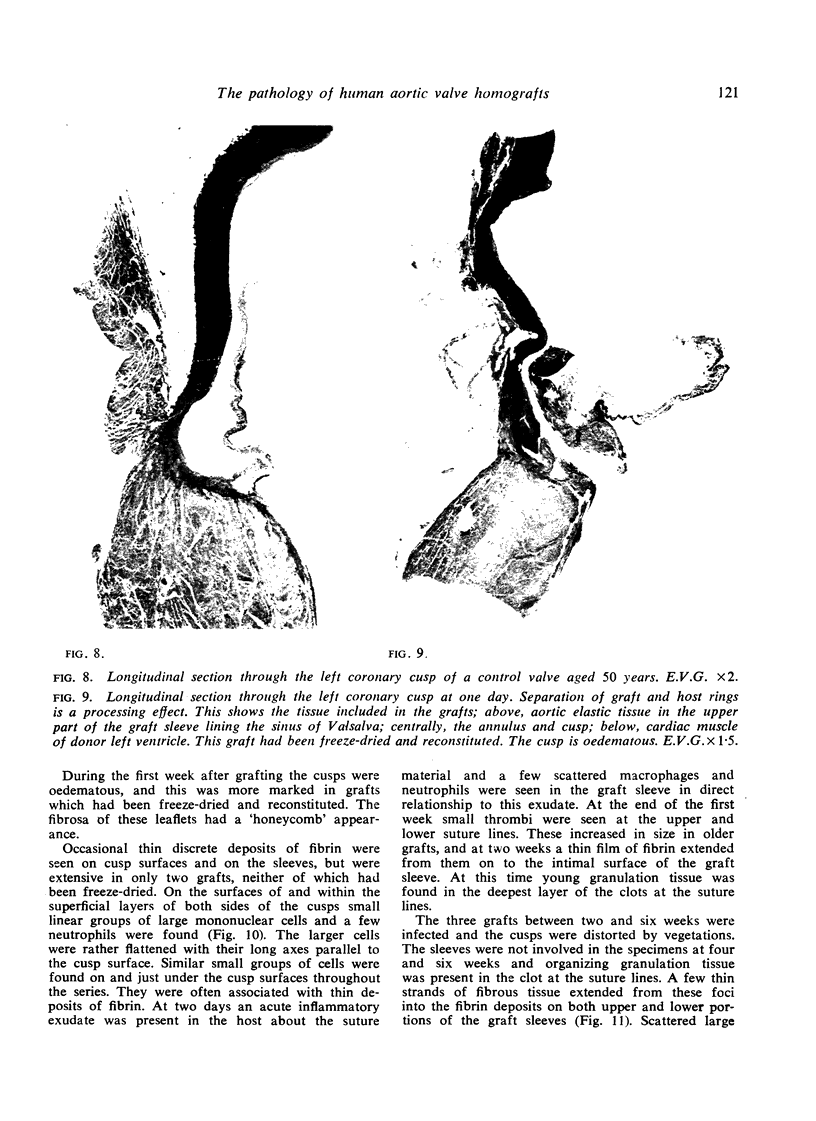
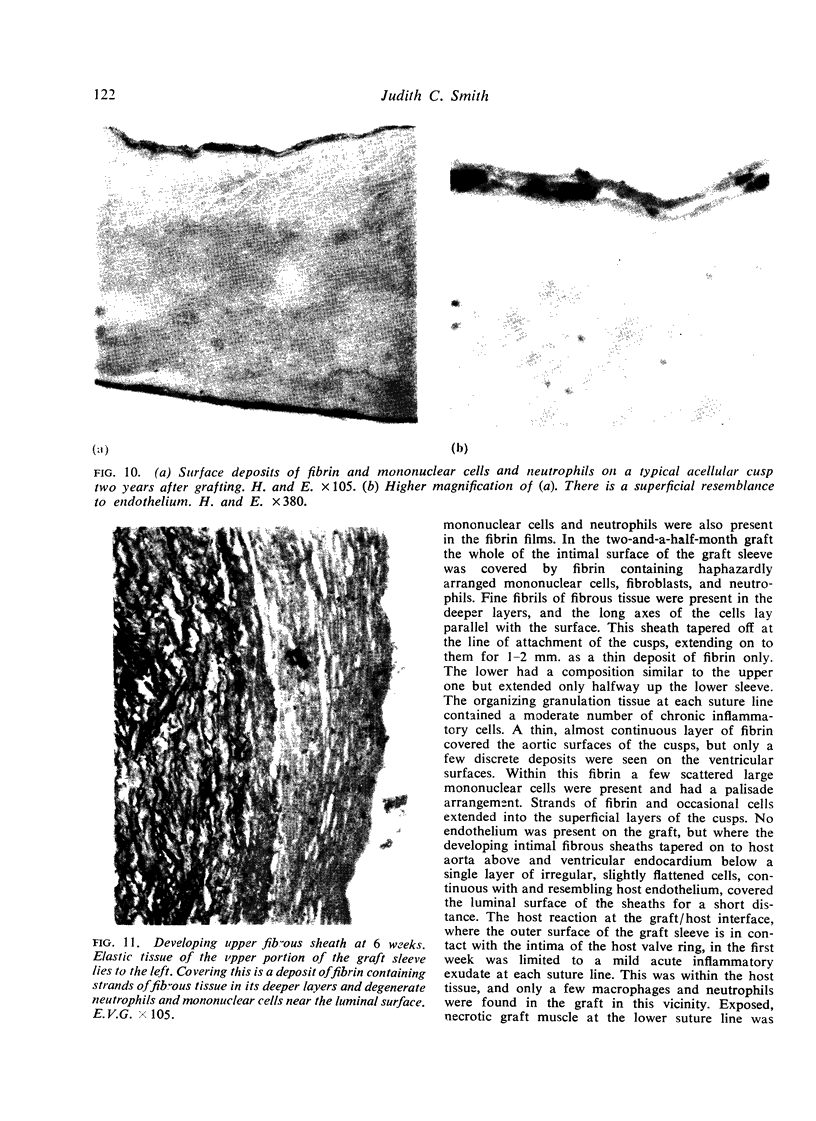
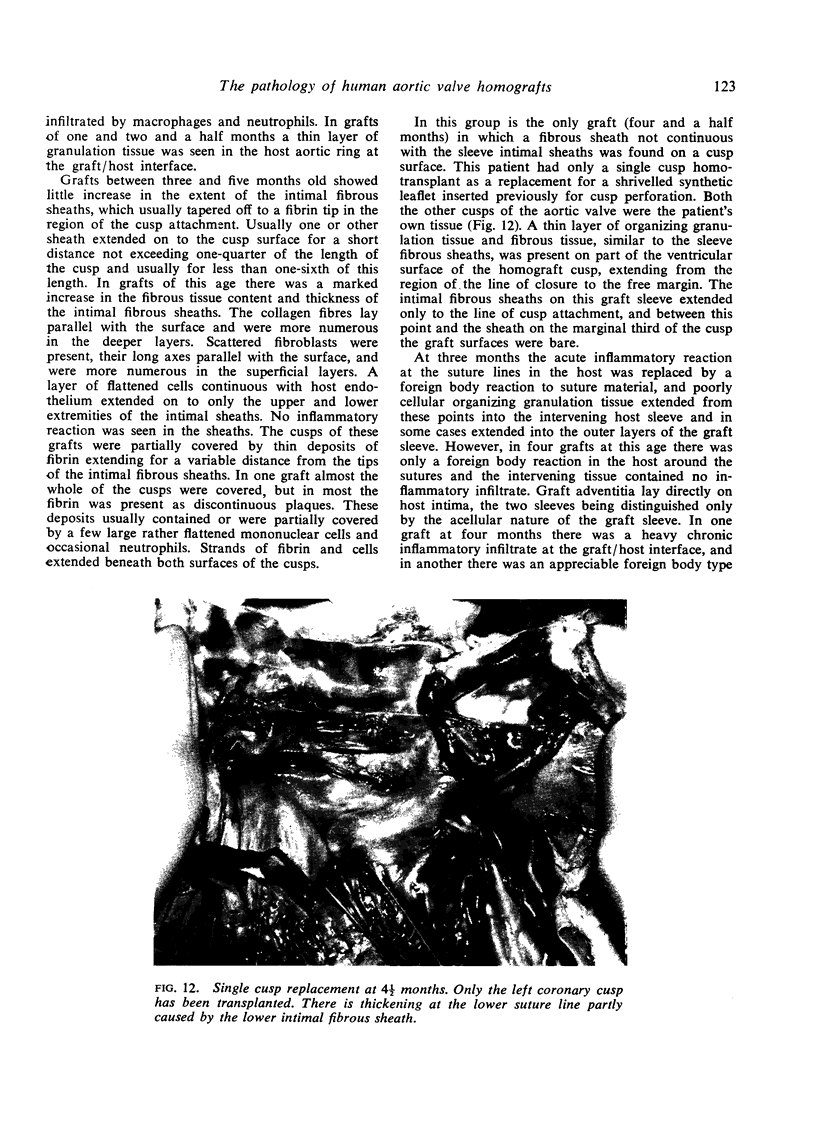
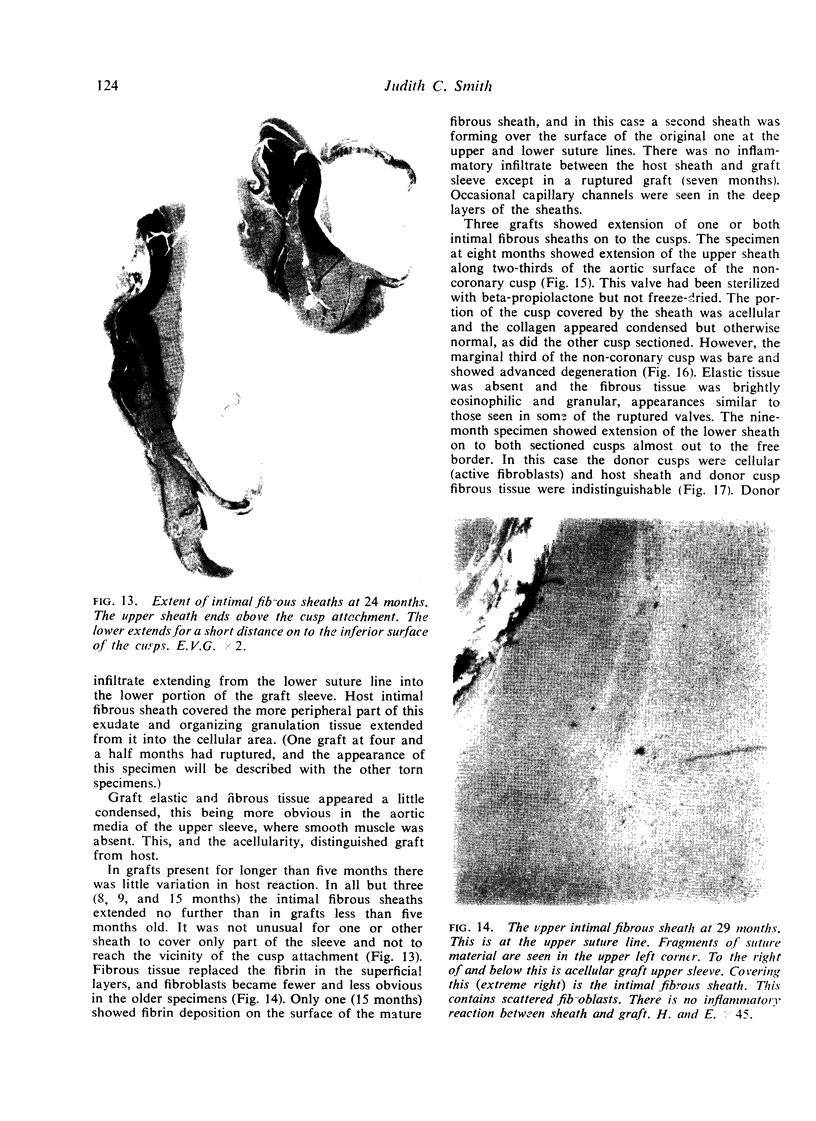
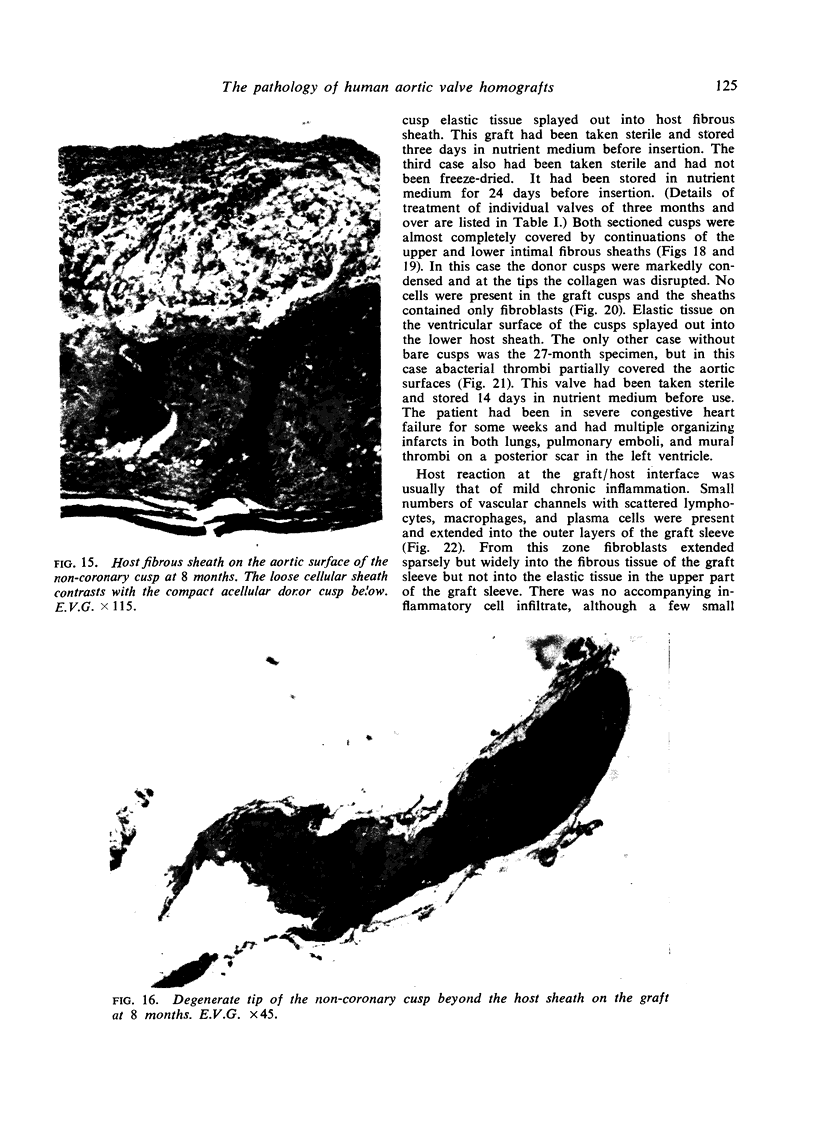
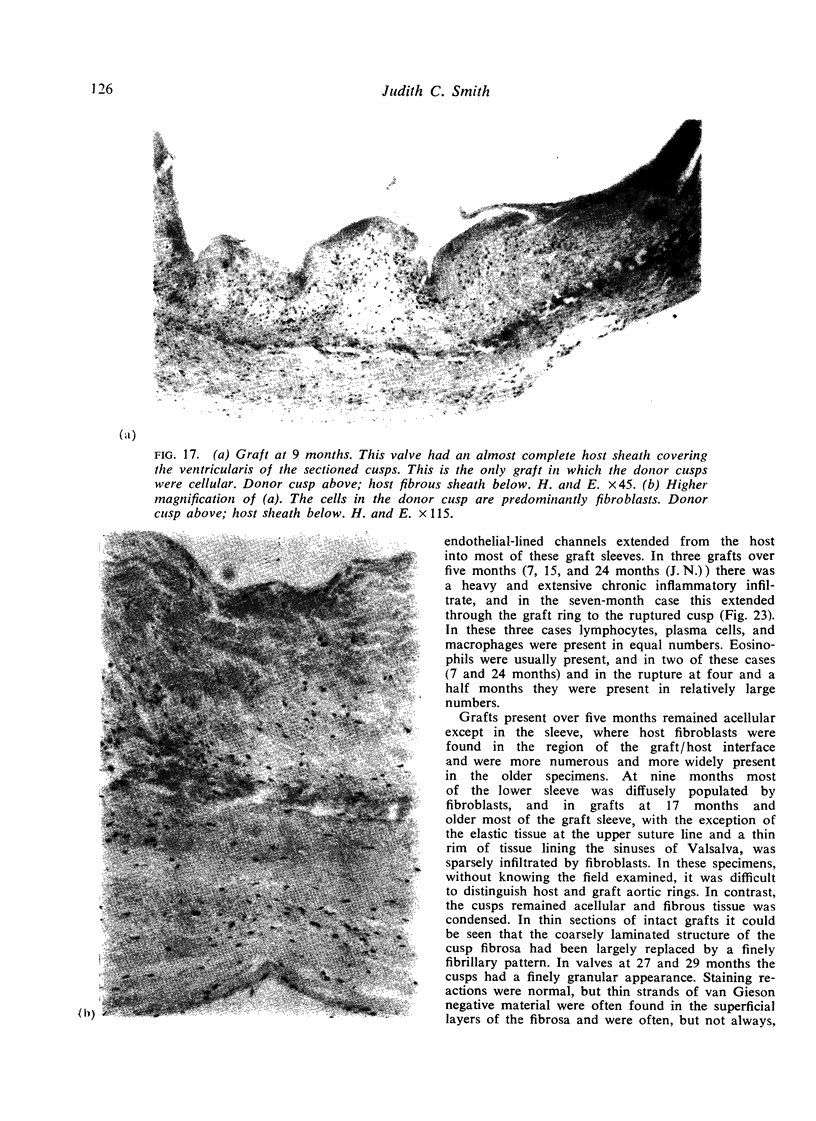
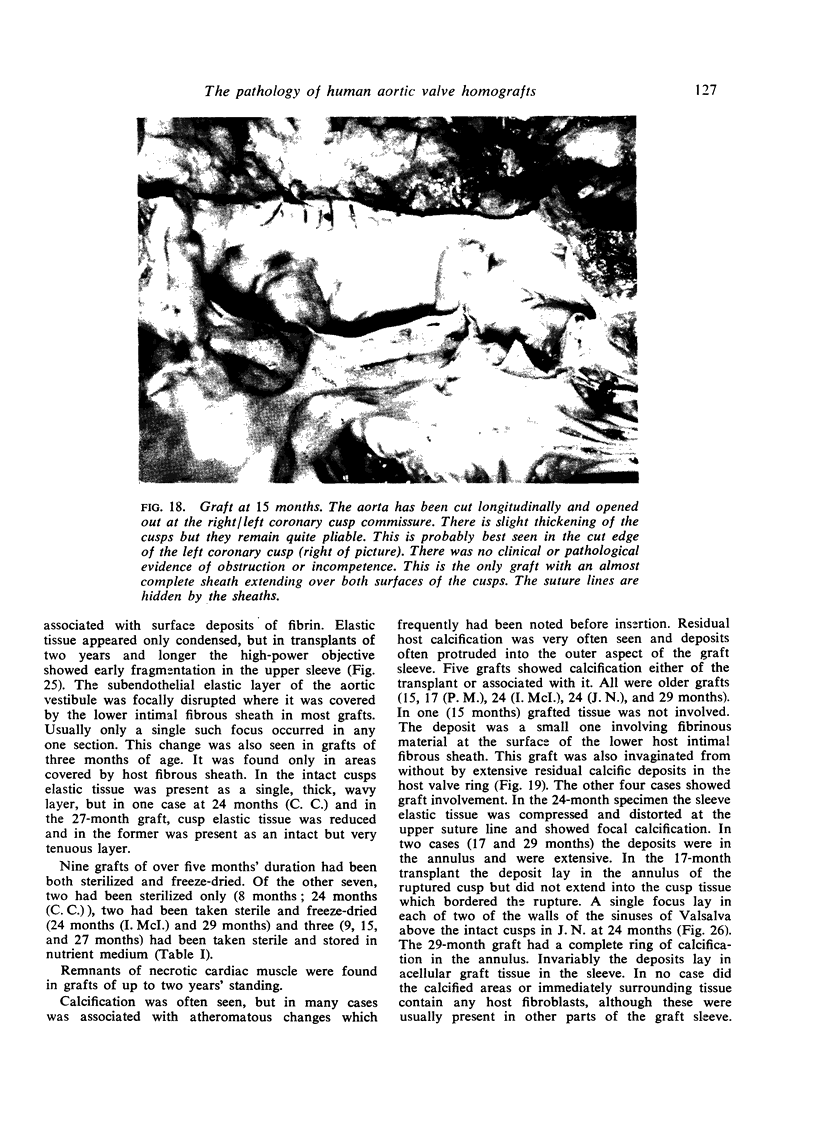
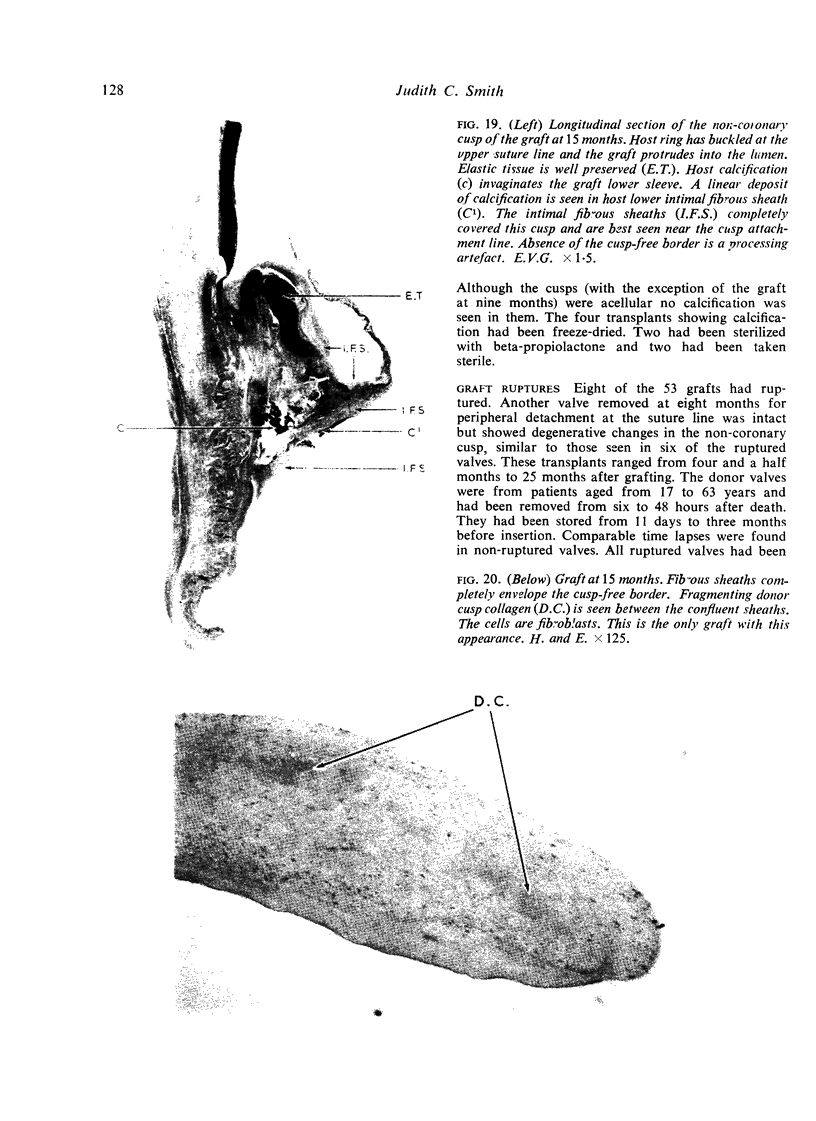
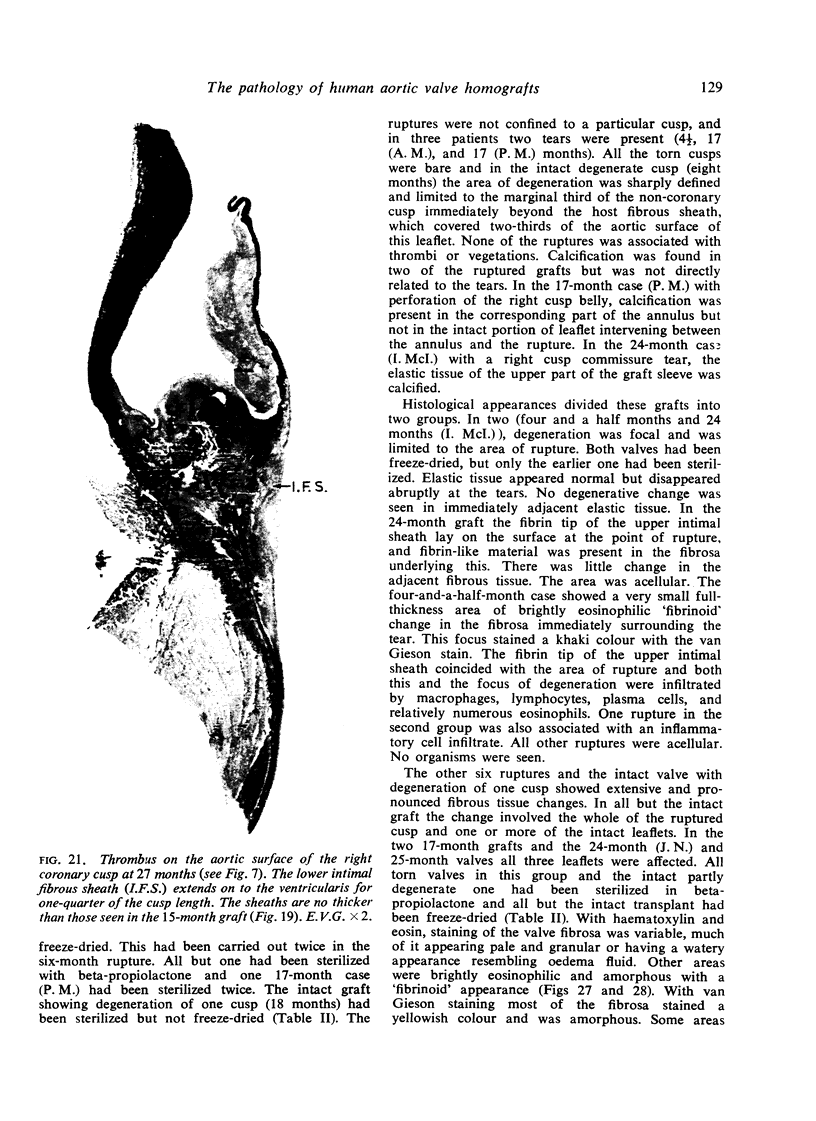
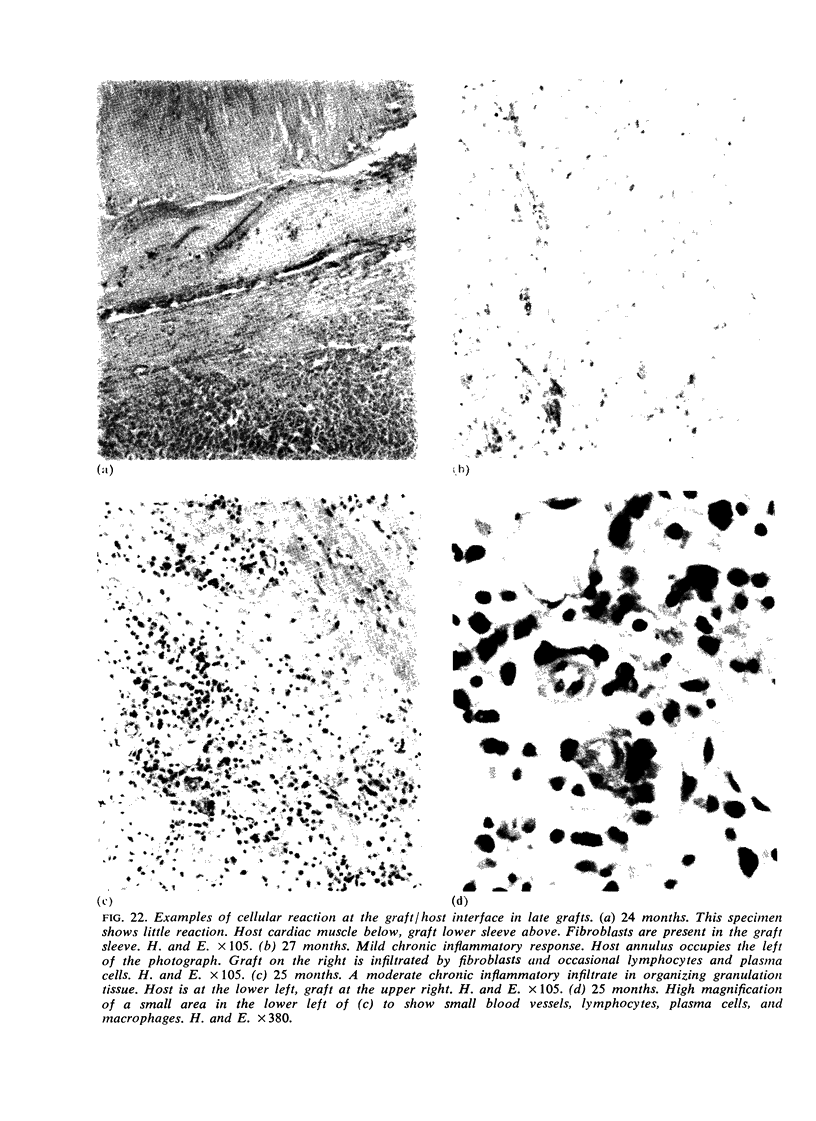
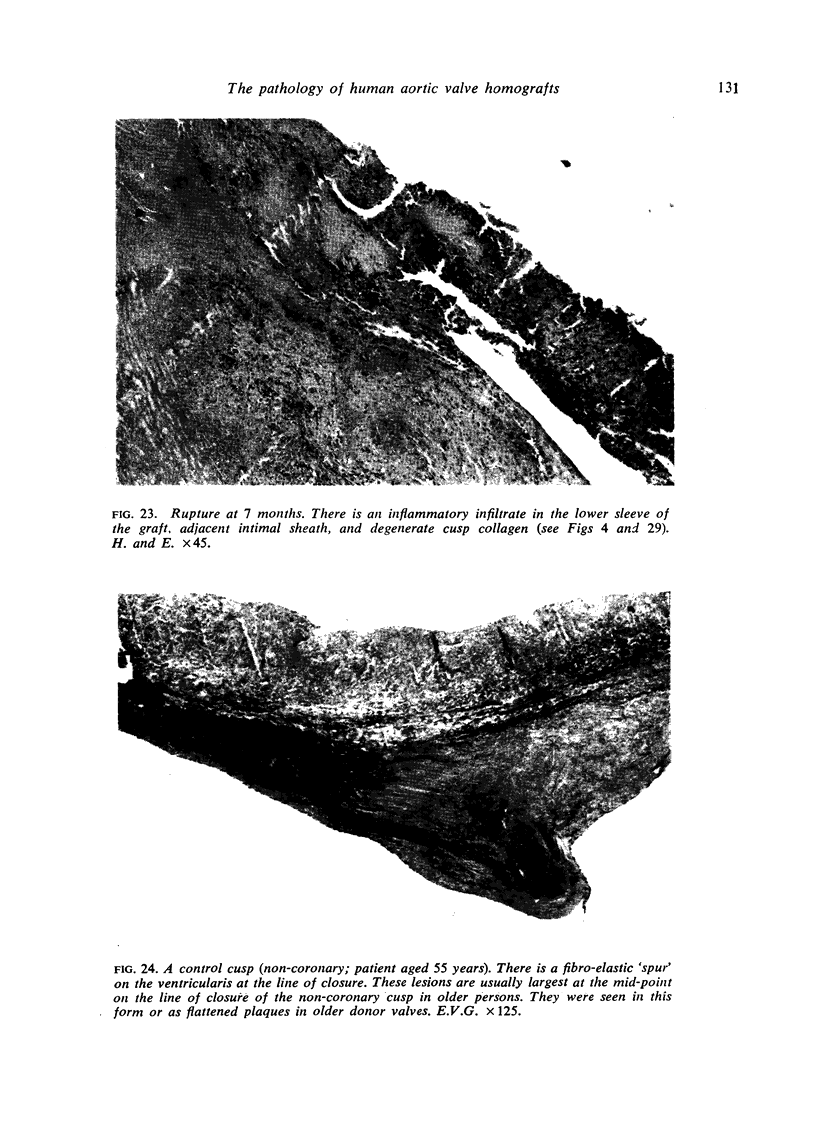
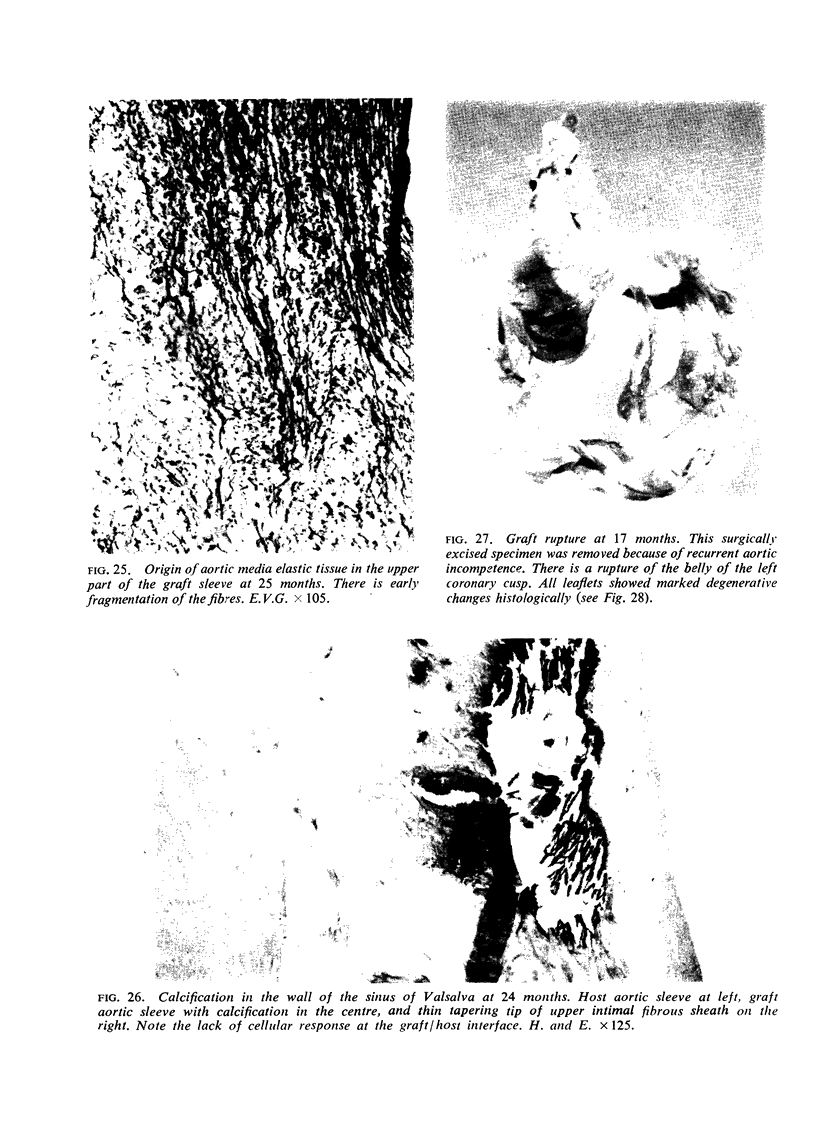
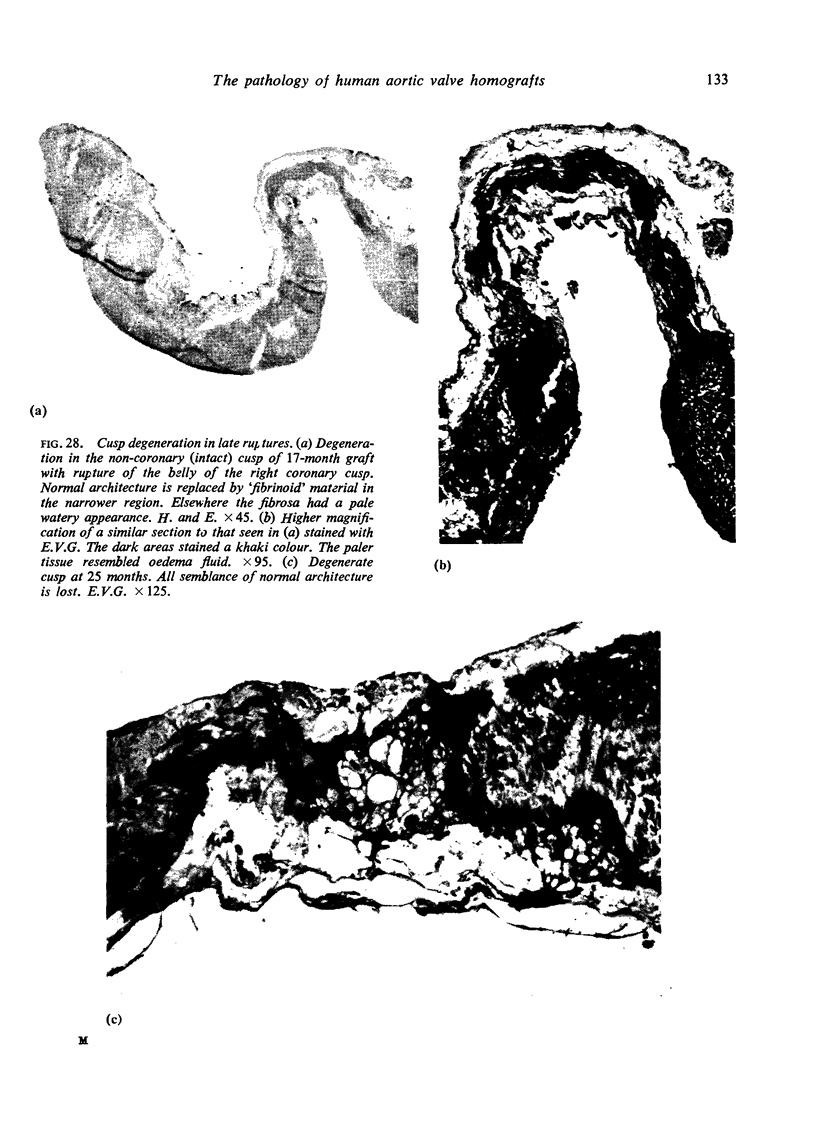
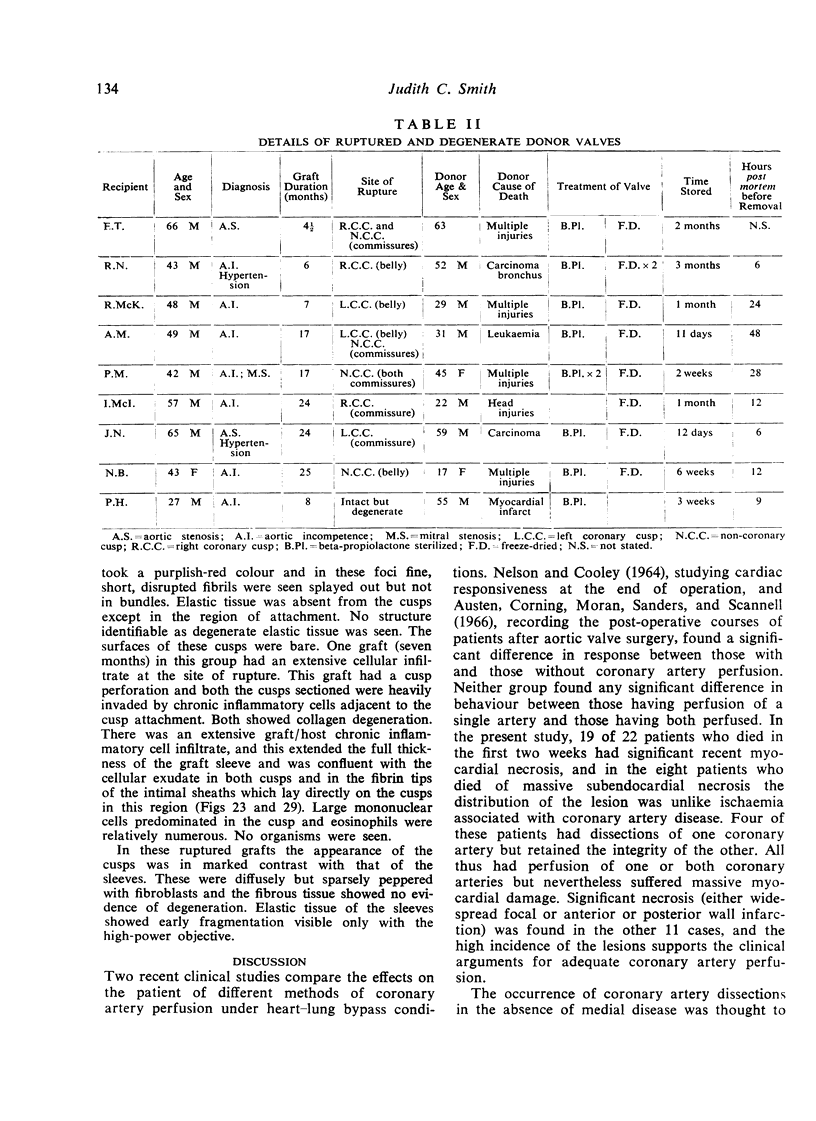
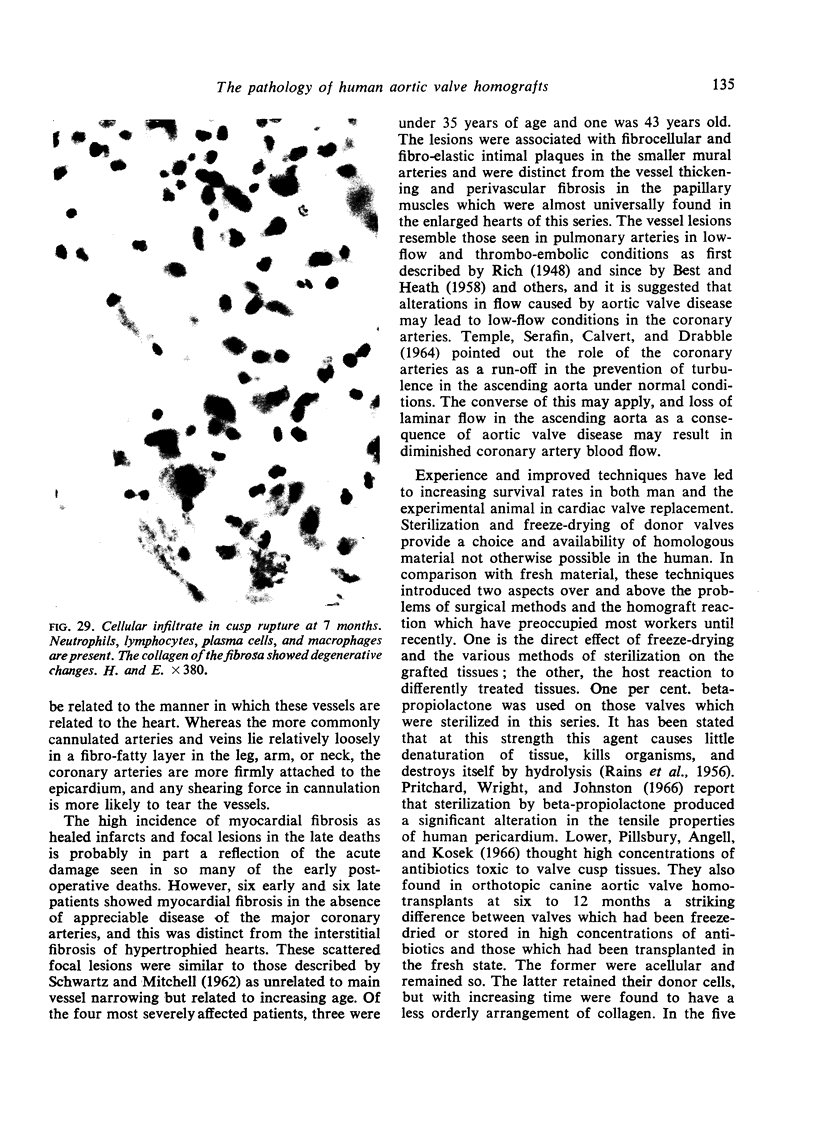
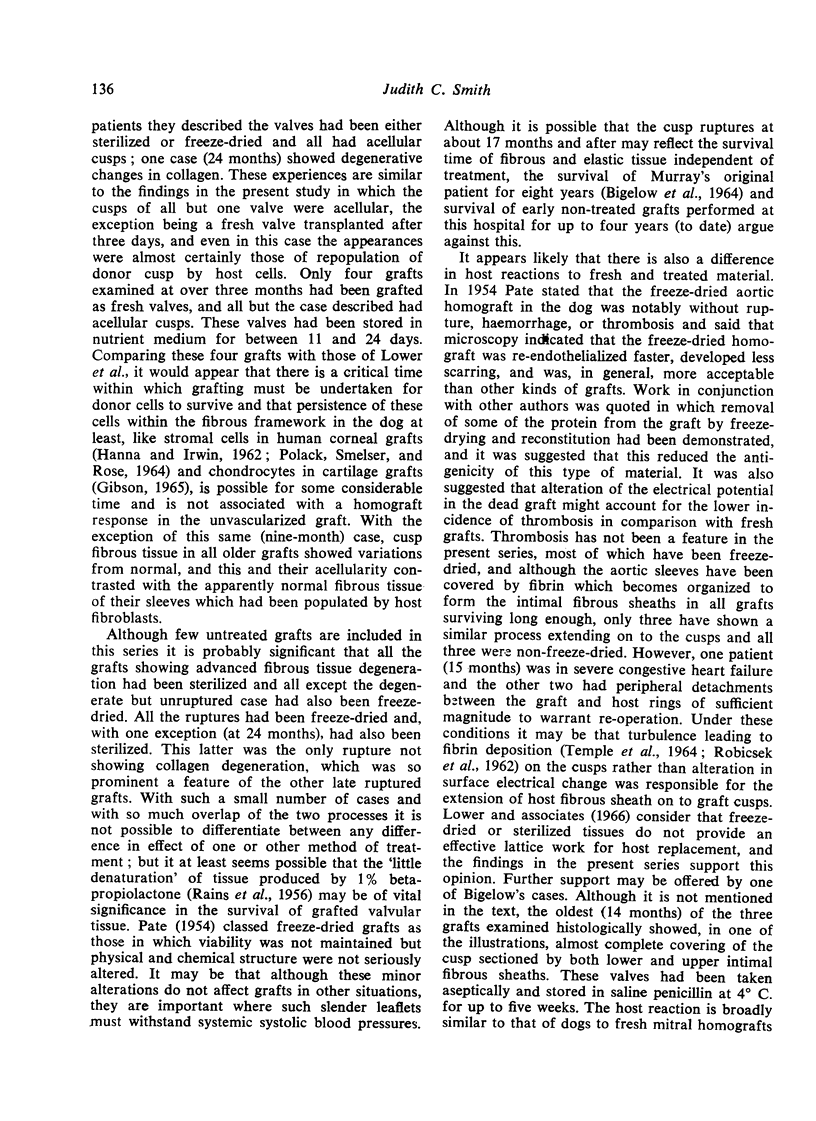
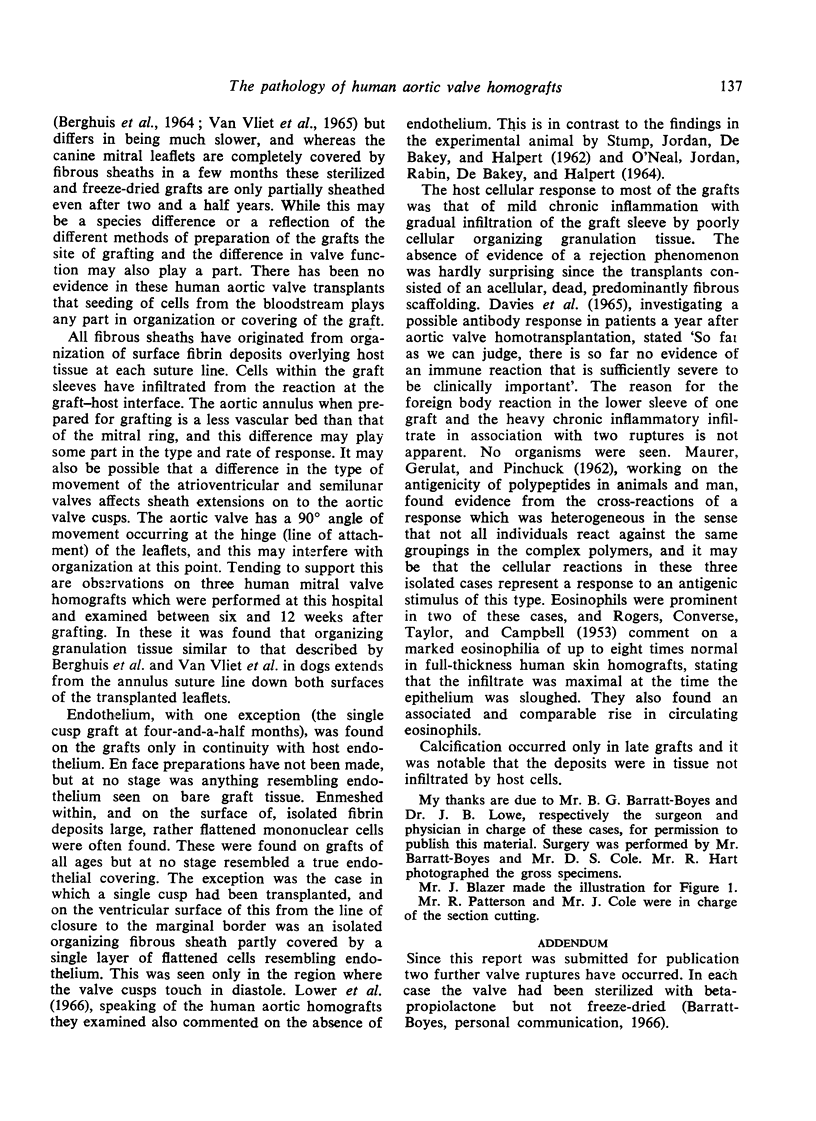
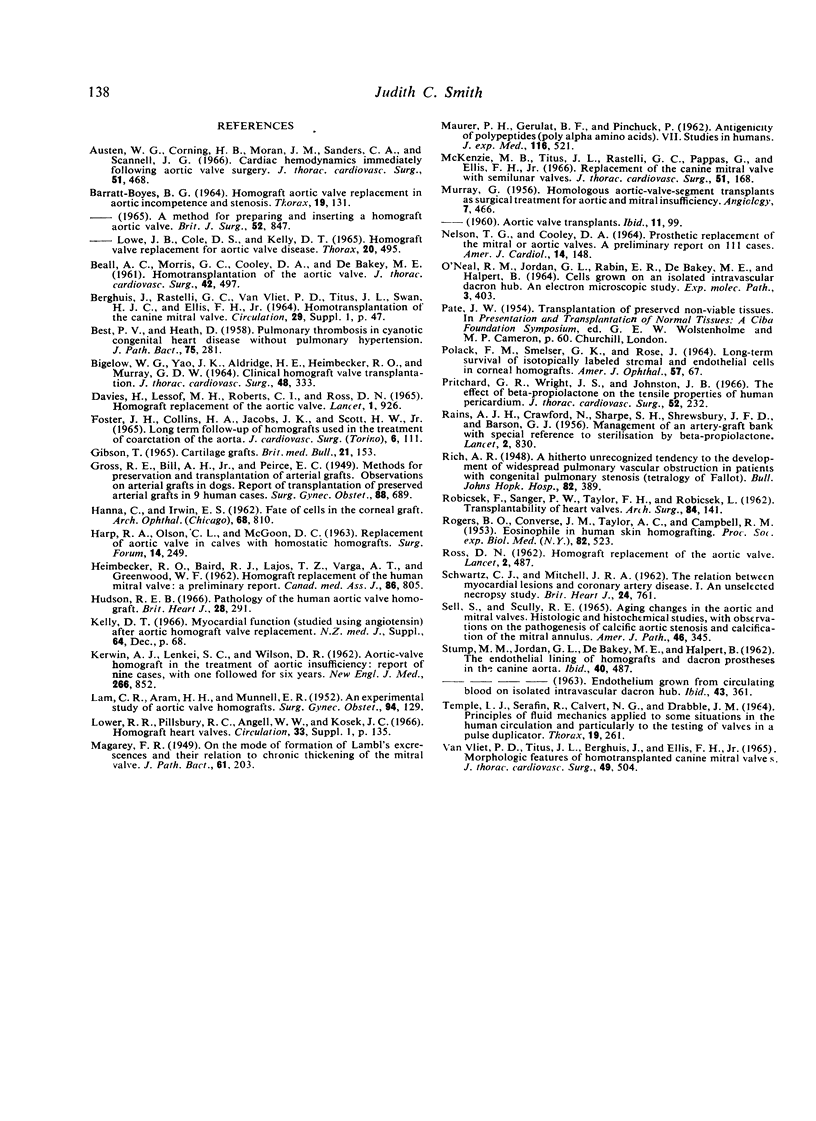
Images in this article
Selected References
These references are in PubMed. This may not be the complete list of references from this article.
- BARRATT-BOYES B. G. HOMOGRAFT AORTIC VALVE REPLACEMENT IN AORTIC INCOMPETENCE AND STENOSIS. Thorax. 1964 Mar;19:131–150. doi: 10.1136/thx.19.2.131. [DOI] [PMC free article] [PubMed] [Google Scholar]
- BARSON G. J., CRAWFORD N., RAINS A. J., SHARPE S. H., SHREWSBURY J. F. Management of an artery-graft bank; with special reference to sterilisation by beta-propiolactone. Lancet. 1956 Oct 20;271(6947):830–832. [PubMed] [Google Scholar]
- BEALL A. C., Jr, MORRIS G. C., Jr, COOLEY D. A., DE BAKEY E. Homotransplantation of the aortic valve. J Thorac Cardiovasc Surg. 1961 Oct;42:497–506. [PubMed] [Google Scholar]
- BEST P. V., HEATH D. Pulmonary thrombosis in cyanotic congenital heart disease without pulmonary hypertension. J Pathol Bacteriol. 1958 Apr;75(2):281–291. doi: 10.1002/path.1700750206. [DOI] [PubMed] [Google Scholar]
- BIGELOW W. G., YAO J. K., ALDRIDGE H. E., HEIMBECKER R. O., MURRAY G. D. CLINICAL HOMOGRAFT VALVE TRANSPLANTATION. J Thorac Cardiovasc Surg. 1964 Sep;48:333–345. [PubMed] [Google Scholar]
- Barratt-Boyes B. G., Lowe J. B., Cole D. S., Kelly D. T. Homograft valve replacement for aortic valve disease. Thorax. 1965 Nov;20(6):495–504. [PMC free article] [PubMed] [Google Scholar]
- DAVIES H., LESSOF M. H., ROBERTS C. I., ROSS D. N. HOMOGRAFT REPLACEMENT OF THE AORTIC VALVE: FOLLOW-UP STUDIES IN TWELVE PATIENTS. Lancet. 1965 May 1;1(7392):926–929. doi: 10.1016/s0140-6736(65)91252-3. [DOI] [PubMed] [Google Scholar]
- FOSTER J. H., COLLINS H. A., JACOBS J. K., SCOTT H. W., Jr LONG TERM FOLLOW-UP OF HOMOGRAFTS USED IN THE TREATMENT OF COARCTION OF THE AORTA. J Cardiovasc Surg (Torino) 1965 Mar-Apr;6:111–120. [PubMed] [Google Scholar]
- GIBSON T. CARTILAGE GRAFTS. Br Med Bull. 1965 May;21:153–156. doi: 10.1093/oxfordjournals.bmb.a070384. [DOI] [PubMed] [Google Scholar]
- HARP R. A., OLSON C. L., MCGOON D. C. REPLACEMENT OF AORTIC VALVE IN CALVES WITH HOMOSTATIC HOMOGRAFTS. Surg Forum. 1963;14:249–250. [PubMed] [Google Scholar]
- HEIMBECKER R. O., BAIRD R. J., LAJOS T. Z., VARGA A. T., GREENWOOD W. F. Homograft replacement of the human mitral valve. A preliminary report. Can Med Assoc J. 1962 May 5;86:805–809. [PMC free article] [PubMed] [Google Scholar]
- Hudson R. E. Pathology of the human aortic valve homograft. Br Heart J. 1966 May;28(3):291–301. doi: 10.1136/hrt.28.3.291. [DOI] [PMC free article] [PubMed] [Google Scholar]
- KERWIN A. J., LENKEI S. C., WILSON D. R. Aortic-valve homograft in the treatment of aortic insufficiency. Report of nine cases, with one followed for six years. N Engl J Med. 1962 Apr 26;266:852–857. doi: 10.1056/NEJM196204262661702. [DOI] [PubMed] [Google Scholar]
- LAM C. R., ARAM H. H., MUNNELL E. R. An experimental study of aortic valve homografts. Surg Gynecol Obstet. 1952 Feb;94(2):129–135. [PubMed] [Google Scholar]
- MAGAREY F. R. On the mode of formation of Lambl's excrescences and their relation to chronic thickening of the mitral valve. J Pathol Bacteriol. 1949 Apr;61(2):203-8, 5 pl. doi: 10.1002/path.1700610207. [DOI] [PubMed] [Google Scholar]
- MAURER P. H., GERULAT B. F., PINCHUCK P. Antigenicity of polypeptides (poly alpha amino acids). VII. Studies in humans. J Exp Med. 1962 Oct 1;116:521–534. doi: 10.1084/jem.116.4.521. [DOI] [PMC free article] [PubMed] [Google Scholar]
- MURRAY G. Homologous aortic-valve-segment transplants as surgical treatment for aortic and mitral insufficiency. Angiology. 1956 Oct;7(5):466–471. doi: 10.1177/000331975600700509. [DOI] [PubMed] [Google Scholar]
- McKenzie M. B., Titus J. L., Rastelli G. C., Pappas G., Ellis F. H., Jr Replacement of the canine mitral valve with semilunar valves. J Thorac Cardiovasc Surg. 1966 Feb;51(2):168–179. [PubMed] [Google Scholar]
- NELSON T. G., COOLEY D. A. PROSTHETIC REPLACEMENT OF THE MITRAL OR AORTIC VALVES. A PRELIMINARY REPORT ON 111 CASES. Am J Cardiol. 1964 Aug;14:148–153. doi: 10.1016/0002-9149(64)90125-0. [DOI] [PubMed] [Google Scholar]
- POLACK F. M., SMELSER G. K., ROSE J. LONG-TERM SURVIVAL OF ISOTOPICALLY LABELED STROMAL AND ENDOTHELIAL CELLS IN CORNEAL HOMOGRAFTS. Am J Ophthalmol. 1964 Jan;57:67–78. doi: 10.1016/0002-9394(64)92033-1. [DOI] [PubMed] [Google Scholar]
- Pritchard G. R., Wright J. S., Johnston J. B. The effect of beta-propiolactone on the tensile properties of human pericardium. J Thorac Cardiovasc Surg. 1966 Aug;52(2):232–235. [PubMed] [Google Scholar]
- ROBICSEK F., SANGER P. W., TAYLOR F. H., ROBICSEK L. Transplantability of heart valves. Arch Surg. 1962 Jan;84:141–148. doi: 10.1001/archsurg.1962.01300190145018. [DOI] [PubMed] [Google Scholar]
- SCHWARTZ C. J., MITCHELL J. R. The relation between myocardial lesions and coronary artery disease. I. An unselected necropsy study. Br Heart J. 1962 Nov;24:761–786. doi: 10.1136/hrt.24.6.761. [DOI] [PMC free article] [PubMed] [Google Scholar]
- SELL S., SCULLY R. E. AGING CHANGES IN THE AORTIC AND MITRAL VALVES. HISTOLOGIC AND HISTOCHEMICAL STUDIES, WITH OBSERVATIONS ON THE PATHOGENESIS OF CALCIFIC AORTIC STENOSIS AND CALCIFICATION OF THE MITRAL ANNULUS. Am J Pathol. 1965 Mar;46:345–365. [PMC free article] [PubMed] [Google Scholar]
- STUMP M. M., JORDAN G. L., DE BAKEY M. E., HALPERT B. The endothelial lining of homografts and dacron prostheses in the canine aorta. Am J Pathol. 1962 Apr;40:487–491. [PMC free article] [PubMed] [Google Scholar]
- TEMPLE L. J., SERAFIN R., CALVERT N. G., DRABBLE J. M. PRINCIPLES OF FLUID MECHANICS APPLIED TO SOME SITUATIONS IN THE HUMAN CIRCULATION AND PARTICULARLY TO THE TESTING OF VALVES IN A PULSE DUPLICATOR. Thorax. 1964 May;19:261–267. doi: 10.1136/thx.19.3.261. [DOI] [PMC free article] [PubMed] [Google Scholar]
- VANVLIET P. D., TITUS J. L., BERGHUIS J., ELLIS F. H., Jr MORPHOLOGIC FEATURES OF HOMOTRANSPLANTED CANINE MITRAL VALVES. J Thorac Cardiovasc Surg. 1965 Mar;49:504–510. [PubMed] [Google Scholar]



